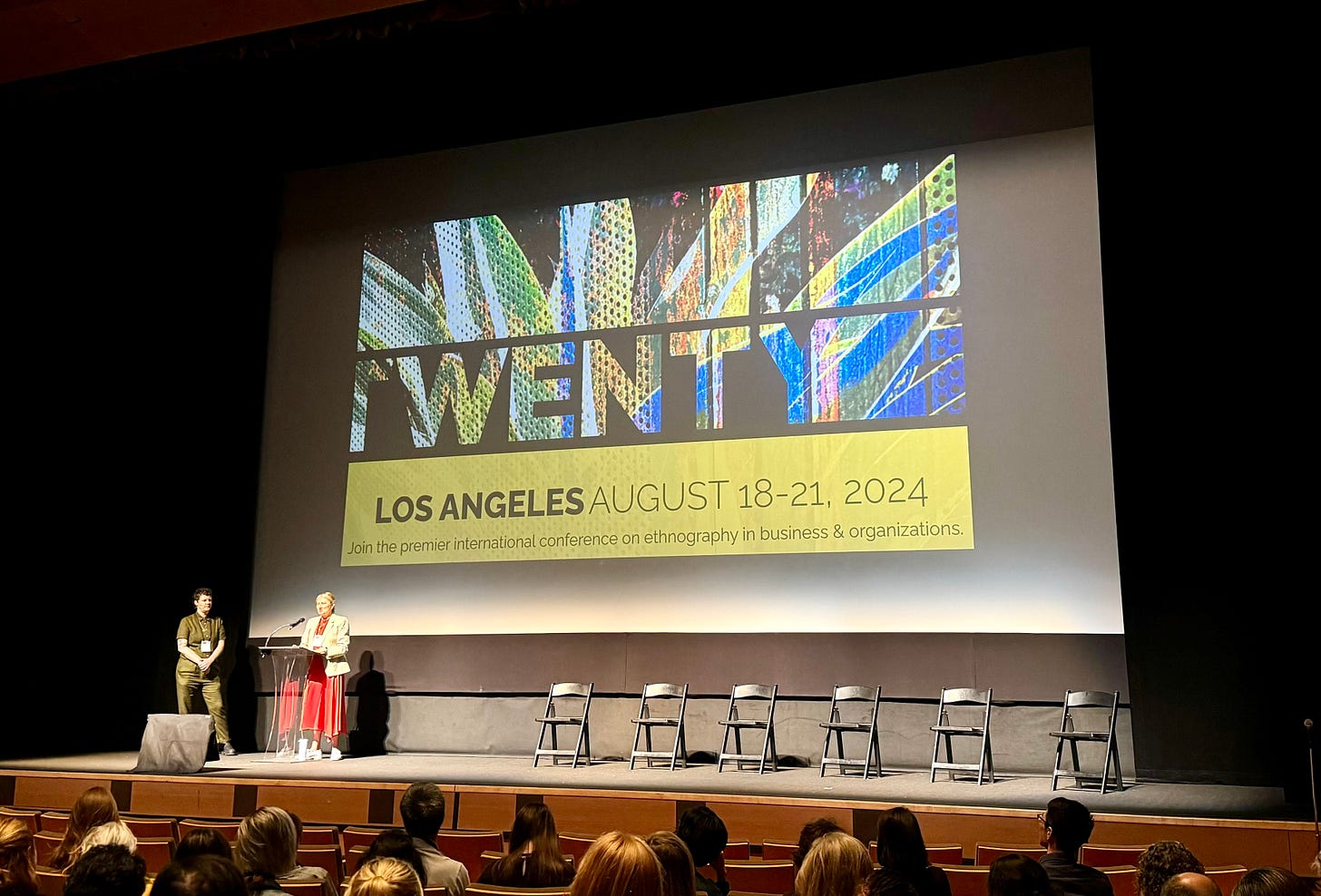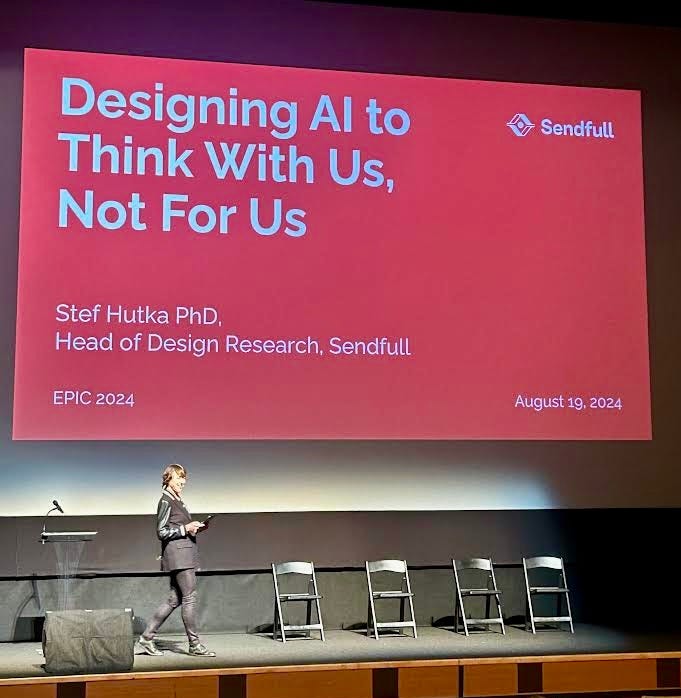I'm writing this from Santa Monica, CA, where I'm attending the 20th annual EPIC conference, the premier international gathering focused on ethnography in business and organizations. Ethnography is a powerful approach to understanding people, organizations, products and services using theory and methods from the social sciences.
This will be a quick episode, shared before headed back into the conference for a final day of sessions, conversation and participating in a panel, Ethnography in AI Product Development. I offer a few updates and thoughts that I’ll expand on in future episodes.
Presenting a New Framework for Building Human-Centered AI
Current human-centered design approaches focus on solving for existing problem spaces and do not fully address the foundational challenge that generative AI (genAI) presents: a solution unlocking new problem spaces. The urgency of addressing this challenge is amplified by genAI's rapidly evolving capacity to perform increasingly complex "thinking tasks". In my EPIC paper, I presented a new framework and corresponding toolkit to address genAI's foundational challenge, helping design researchers guide the development of useful, desirable genAI solutions that think with us, not for us.
This presentation was a part of an exciting session called The Shake-Up: Crafting Research Futures, which examined meaty topics in the research community, such as the role of strategic research in organizations (paper by Morgan Ramsey-Elliot), democratization of research practices (paper by Nadine Levin), and the importance of optimism as a tool for social transformation (pechakucha by Meg Kinney).
Tracking Research Impact
A key theme across the conference is how researchers can measure impact in our work. For some background on the problem: Researchers always strive to deliver actionable insights, but often don’t have direct control over how (or if) those insights are applied. Add in the challenge of lacking consistent, validated methods for impact tracking that can be used across the field.
Jeanne Bard and Sam Ladner offered an insightful discussion about this topic, including what researchers can learn from other professions. For instance, economists had to develop metrics for tracking complex phenomena, such as the state of the economy. GDP, as a metric, was developed in the 1930s, and became the standard tool for sizing up a country’s economy in the 1940s. We can look to these examples as we aim to develop impact tracking metrics to align with the value our research provides in both private and public sectors.
I also see an opportunity to expand this discussion to how we track product quality throughout the product development lifecycle - especially when it comes to emerging technologies with minimal precedent. For example, how do we define a “high quality” augmented reality experience? When is it “good enough” to ship, and who decides?
The Value of Designing for Local Contexts

When we incorporate local community into our design practice, we can build solutions that are relevant, valuable and connective. This theme was set early in the conference, with the opening keynote by artist duo Fallen Fruit (David Allen Burns and Austin Young). Fallen Fruit creates public orchards that allow community members to harvest fresh fruit and rethink their ideas about nature. Their work started with mapping the fruit trees on the border of public and private space in Silverlake, a Los Angeles neighborhood. Over the course of two decades, they’ve turned this work into a global phenomenon that connects - and literally nurtures - communities.
This theme would return across conference sessions, whether it was the role of vernacular knowledge in neurodegenerative diseases and healthcare (case study by Juliana Saldarriaga) or how to build LLMs that enhance local agency for communities across Ethiopia, Nigeria, Kenya, and South Africa (paper by Lindsey DeWitt Prat, Olivia Nercy Lucas, Christopher Golias and Mia Lewis).
Stay tuned for a deeper dive on these topics next week!
Is your team building an emerging technology product? Sendfull can help with customer discovery, concept validation and building a product evaluation plan. Reach out at hello@sendfull.com
That’s a wrap 🌯 . More human-computer interaction news from Sendfull next week.






